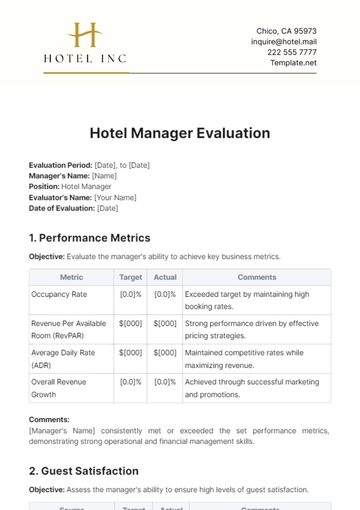Free Cost Evaluation Report

Introduction
The purpose of this report is to provide a detailed cost evaluation of the current and projected expenses associated with [YOUR COMPANY NAME]'s ongoing projects. This evaluation aims to identify potential areas for cost savings and to ensure financial efficiency in alignment with our organizational objectives.
Current Cost Structure
Operational Costs
Operational costs encompass all routine expenses incurred in the day-to-day functioning of the organization. This section provides an overview of these expenditures.
Category | Monthly Cost | Annual Cost |
|---|---|---|
Personnel | $50,000 | $600,000 |
Utilities | $10,000 | $120,000 |
Maintenance | $5,000 | $60,000 |
Project-Specific Costs
This subsection details the costs attributable to ongoing projects, which vary widely depending on project scope and requirements.
Project Name | Expected Cost | Spent to Date | Variance |
|---|---|---|---|
Project Alpha | $200,000 | $180,000 | $20,000 |
Project Beta | $150,000 | $160,000 | -$10,000 |
Project Gamma | $100,000 | $95,000 | $5,000 |
Comparative Cost Analysis
Benchmarking Against Industry Standards
Benchmarking is a crucial aspect of our cost evaluation as it helps us compare our expenses with industry standards. This can highlight discrepancies and areas needing improvement.
Personnel: Our costs align with industry averages due to competitive salaries and benefits.
Utilities: Slightly above the industry benchmark, indicating potential inefficiencies.
Maintenance: Lower than the industry average, reflecting efficient resource management.
Cost Trend Analysis
This analysis examines the trend of our costs over time, identifying patterns and providing insights for future budgeting.
Personnel Costs: Steady increase due to periodic salary increments and staffing drives.
Utilities: Fluctuating due to seasonal changes and consumption patterns.
Maintenance: Consistent with minor increments aligned with infrastructure expansion.
Recommendations
Cost Reduction Strategies
Based on the findings and analysis, we propose the following strategies to optimize our cost structures:
Implement energy-saving initiatives to reduce utility costs.
Consider outsourcing specific project tasks to manage fluctuations in project-specific costs more effectively.
Regularly review contracts with suppliers to ensure competitive rates.
Future Cost Management
To maintain financial health and improve our cost management, we suggest the following actions:
Enhanced budget training for project managers to align project spendings with forecasts.
Quarterly reviews of cost structures to address any discrepancies promptly.
Investment in technology to automate and streamline financial reporting.
Conclusion
The cost evaluation highlights significant insights into our current financial operations. While some areas such as maintenance display efficiency, others like utilities require strategic intervention to ensure optimal resource use. Implementing the recommendations outlined will aid in maintaining budgetary discipline and financial resilience moving forward.
- 100% Customizable, free editor
- Access 1 Million+ Templates, photo’s & graphics
- Download or share as a template
- Click and replace photos, graphics, text, backgrounds
- Resize, crop, AI write & more
- Access advanced editor
Streamline your financial assessments with Template.net’s Cost Evaluation Report Template. Fully customizable and editable in our AI Editor Tool, this professional report format allows for precise cost analysis and reporting. Ideal for businesses and project managers, it simplifies evaluation processes, ensuring clear, organized documentation for decision-making. Make it yours now!





























